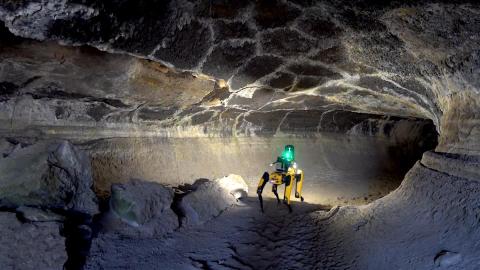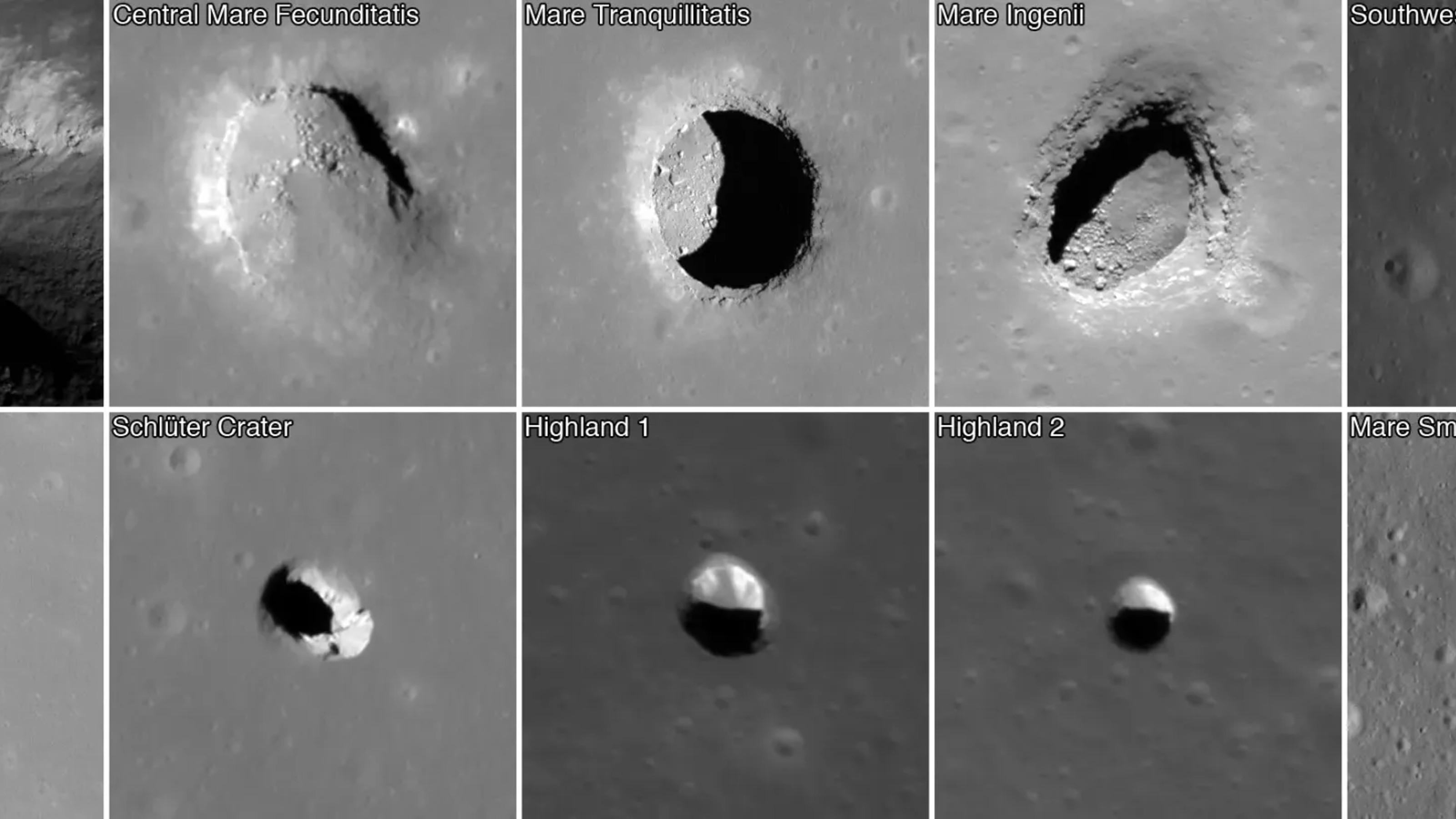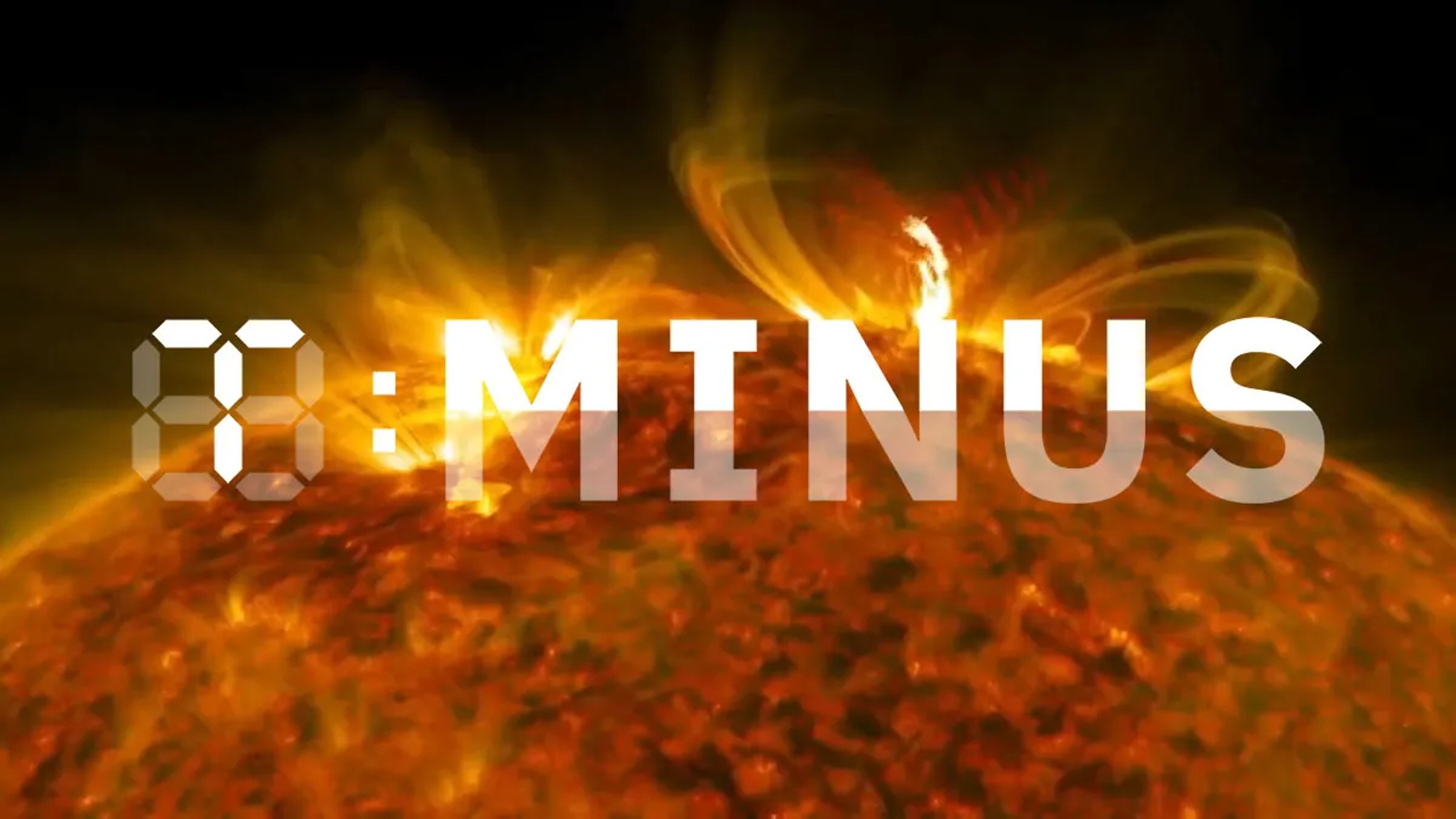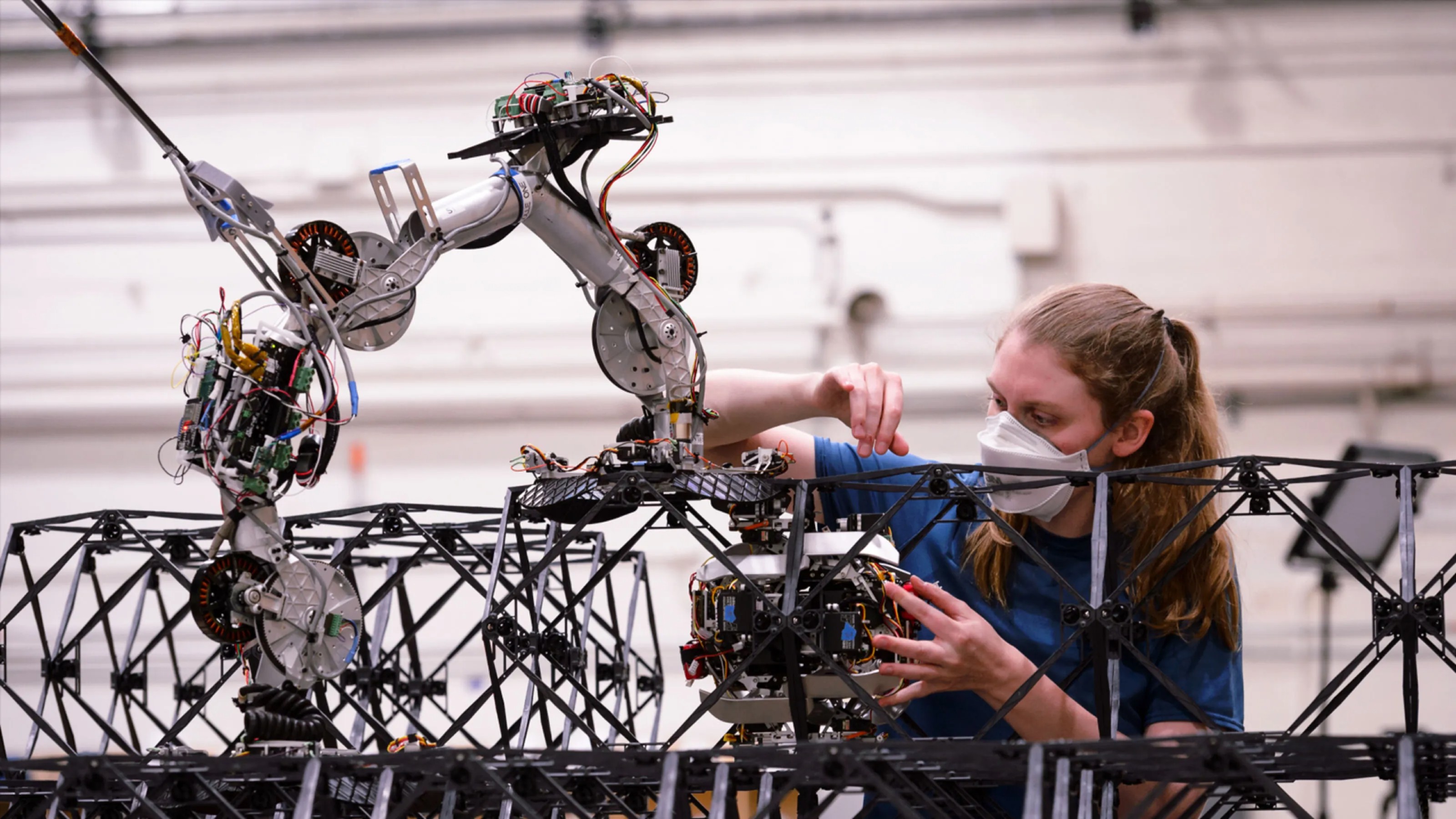Meet the robot ‘dog’ NASA is sending to Mars

Credit: Courtesy NASA/JPL-Caltech
- NASA’s Jet Propulsion Laboratory announces the deployment of a robotic “dog” for Mars exploration.
- The robot is a modified Boston Dynamics cyberdog familiar to the internet from YouTube videos over the last few years.
- The bot will be autonomous and smart enough to explore Martian caves that may one day provide shelter for human visitors to the Red Planet.
While Mars rovers have been and are unquestionably amazing, they’re not the most adaptable or speedy little bots. Curiosity, for example, rolls across flat-ish parts of the Red Planet’s surface at a decidedly un-blistering .09 miles per hour. That’s about a third as fast as most people walk.
At the December 14, 2020 meeting of American Geophysical Union (AGU), held online this year, NASA/JPL-Caltech announced a new family of robotic explorers referred to as “Mars Dogs.”
They’re calling it “Au-Spot,” and it’s based on Boston Dynamics’ infamous Spot robot that we’ve been seeing evolve over the last few years in YouTube videos. We’ve watched it survive falling down and getting kicked, and we’ve even seen it dance to “Uptown Funk.” Spot has already evoked all kinds of emotions. It’s creepy enough to drive an episode of “Black Mirror,” and even without a face—or head—it’s also somehow oddly endearing.
Spot Launchyoutu.be
In a way, it’s the abuse we’ve seen Spot suffer on YouTube that makes it such an ideal candidate for Mars missions. If Au-Spot falls over, it can right itself, a not insignificant capability when exploring alien terrain—it’s one of the current rovers’ most significant shortcomings. “Toppling does not mean mission failure,” noted the scientists introducing the bot. “Using recovery algorithms, the robot can self-right from a multitude of falls.”
The 70-pound Au-Spot is also capable of moving three times faster than existing rovers.
This means that Au-Spot will be ideal for exploring Martian caves, an area of great interest to those planning future manned missions to the planet. Satellite images of the red planet have revealed over 1,000 potential cave openings already. It may be possible on such journeys for humans to shelter in caves away from the planet’s brutal dusts storms, extreme cold, and punishing UV radiation. These places, however, are not places into which current rovers can be sent.
On the other hand, Au-Spot’s remarkable flexibility and smarts will allow Earth-bound scientists to see if the caves can really be of use to future astronauts. The bot pup can get down into such caves and then get itself back out. While there, it can produce 3D maps of the terrain thanks to onboard LIDAR. Built-in AI allows the bot to learn the terrain too, so it can avoid entrapment or damage from collisions with obstacles. It strategically deploys communications modules along the way to keep its command personnel appraised of what it’s doing when it’s beneath the surface.
Au-Spot can even intelligently choose between multiple pathways forward, making it a far more flexible tool than current rovers. Most things that rovers do are pre-programmed routines—improvisation requires communicating with a human controller back on Earth some 22 minutes away as the signal flies.
Autonomous Spot: Long-Range Exploration of Extreme Environmentsyoutu.be
Au-Spot is the child of a team of 60 scientists and engineers working together as CoSTAR, or the Collaborative SubTerranean Autonomous Resilient Robots. They’ve customized a factory-fresh Spot, outfitting it with the NeBula (Networked Belief-aware Perceptual Autonomy) system that makes it autonomous enough to successfully navigate new environments, as shown in the DARPA Subterranean Robotics Challenge video above.
To get Au-Spot mission-ready, the CoSTAR team is putting it through its paces here on Earth. In addition to sending it up and down staircases and such, it’s gone on field trips to Northern California’s Tulelake lava tubes for some practice on Mars-like terrain and some cave exploration as well.
At the presentation, the CoSTAR scientists predicted, “These behaviors could one day enable revolutionary scientific missions to take place on the Martian surface and subsurface, thereby pushing the boundaries of NASA’s capability in exploring traditionally inaccessible sites.”





